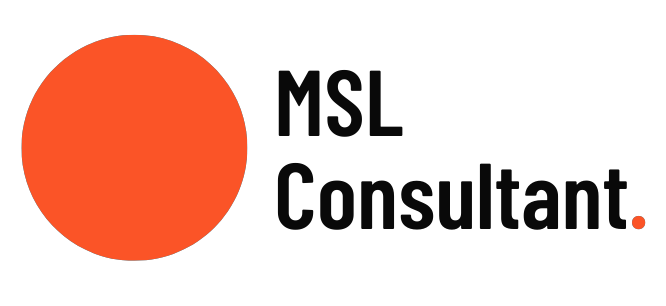6 Pieces of Information to Fast Track your Transition to becoming a Medical Science Liaison (MSL)
Like everything in life, transitioning to a medical science liaison role is easy…..once you know how.
I want to share six of the frequently asked questions I’ve answered for some of my coaching clients recently.
By the end of this article will know how to answer typical MSL interview questions, how to demonstrate your value to your pharmaceutical company and how to discover what to talk to KOLs about in your meetings.
1. How do I demonstrate to the hiring manager that I have commercial acumen and can think strategically BUT that I also recognize the MSL role is non-promotional?
Use this answer in phone or face to face interview to demonstrate your understanding of the MSL role.
“I recognize the MSL is a non-promotional role and all conversations with KOLs are balanced, non-biased and evidence based.
However, I also recognize that a pharmaceutical company is a commercial environment and I must add value to the business. My commercial acumen will enable me to be strategic and develop relationships with internal team members such as sales reps and marketing colleagues.
The ability to think strategically will also be valuable when developing the medical strategy for the product I work on. “
For more MSL interview tips check out our interview resources including guides to help you answer typical MSL interview questions.
2. How do I demonstrate that I have a clear understanding of the MSL role if asked in an interview?
If you are interviewed for your first MSL job (and sometimes even your second or third job), you will be asked this question. Use this answer to give a clear, succinct display of your understanding of the MSL role.
“An MSL is the bridge between the internal pharmaceutical company and the external therapeutic environment.
An MSL is a field based non-promotional medical affairs team member who builds collaborative and mutually beneficial relationships with Key opinion Leaders (KOLs) in a defined therapeutic area with the overall goal to drive the brand forward.
For example, an MSL for an oncology drug will build relationships with medical oncologists, gain insights about how the drug is used, how the clinical data is perceived, what data gaps there are for the drug and share these insights with the company. This will then help the company to develop an effective medical and marketing strategy.”
For more information on the MSL role read Medical Science Liaison, The Ultimate step-by-step guide.
3. How long do Key Opinion Leader (KOL) meetings generally last?
This really depends on the KOL and the objective of the meeting. KOL meetings can last anywhere from 10 mins to 2 hrs. Shorter meetings are usually more common as KOLs are very busy people. Introductory meetings tend to be shorter. If you are going through slides that the company want the KOL to present at a sponsored symposium, the meeting will likely be longer. The average time of a meeting would be 20-30 mins.
Tip: Look out for signs that the KOL is keen to wrap things up e.g. looking at their watch or giving very brief answers. Respect their time and KOLs will be happy to meet you again and again. If you waste their time, you may struggle to get a second meeting.
4. What does a Medical Science Liaison (MSL) talk about in meetings with KOLs?
General topics of discussion are the clinical data for the product you work on, how patients are treated in the given therapeutic area, if the KOL is attending any upcoming conferences, if there any data gaps the KOLs can recognise with the product you work on.
5. How can Medical Science Liaisons (MSLs) maximize their time and efforts at conferences in order to demonstrate their value to their company?
· Do your research before the conference. Try and get your hands on a delegate list. Check the program to see which KOLs are chairing or speaking at each session.
· Identify the talks that you wish to attend. Circulate this list to your colleagues and ask if they have any questions, that they would like you to ask the presenter of each session. This will give you an opportunity to speak to the KOLs after their talk.
· Don't stress yourself out trying to scribble down notes. Take pictures of slides. Use these pictures to prepare your conference report.
6. I’m a scientist, not a clinician but I know Medical Science Liaisons (MSLs) must discuss current treatment options with KOLs. Where can I find this information?
Research current clinical guidelines to understand current treatment of care. These guidelines will be publicly available and written by KOLs.
Search [clinical guideline] + [therapeutic area] + [geographical area you work in]
Example: [clinical guideline] + [breast cancer] + [Australia]
Having knowledge of these clinical guidelines will also give you a great conversation starter in a KOL meeting.
Example: "I read in [X guidelines] that patients with [Disease Y] are treated with [Drug A] as a first line treatment, would that reflect your clinical practice?"
